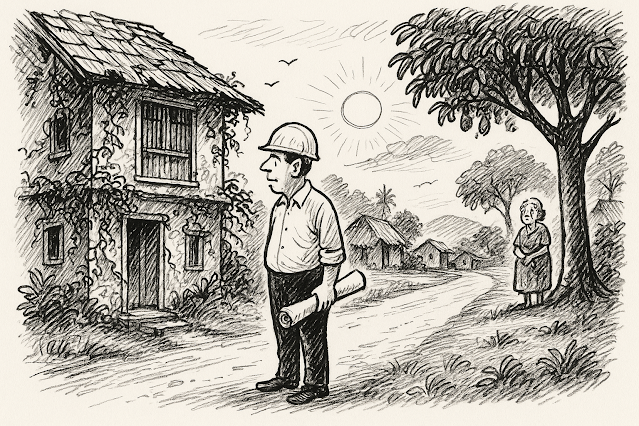The Road Remembered
The sun baked the dusty roads of Ilocos Norte, where Joaquin, a middle-aged Filipino engineer, stood with his suitcase and plans for a multi-lane highway that would soon cut through sleepy farmlands and forgotten villages. After two decades working abroad, he had returned with a government contract and a mission: modernize his homeland.
He spoke with quick English, sketched flyovers and drainage layouts, and dismissed the old men who sat under the mango trees—until one morning, an old woman approached him at the roadside.
"You are from here, anak?" she asked in Ilocano.
He nodded vaguely. "Yes, ma’am. Long time ago."
"Then go find your mother’s house before you draw any more lines on our soil," she said, her eyes deep with something he couldn’t quite name.
That night, curiosity tugged at him. He walked past the village, into the rice fields where banana trees rustled and goats bleated. There, behind a crumbling fence, stood the house he hadn’t seen in thirty years. Windows broken. Vines everywhere. But the old door still creaked the same way. Inside were remnants of his childhood: a wooden top, a broken radio, his father's shoes.
A wave of memories flooded in—rice planting festivals, his mother waking early to light the clay stove, the smell of dried fish and garlic.
He sat in the dust and wept.
The next morning, Joaquin returned to the project site. He told the team, “We’re not destroying the barangay road. We’ll work around it. And the trees—every one that’s older than me stays.”
People started calling him Engineer Balik-Tanaw—the engineer who looked back.
Quote:

